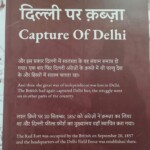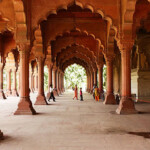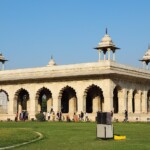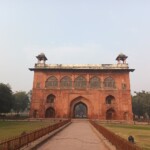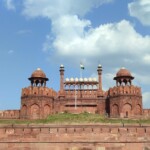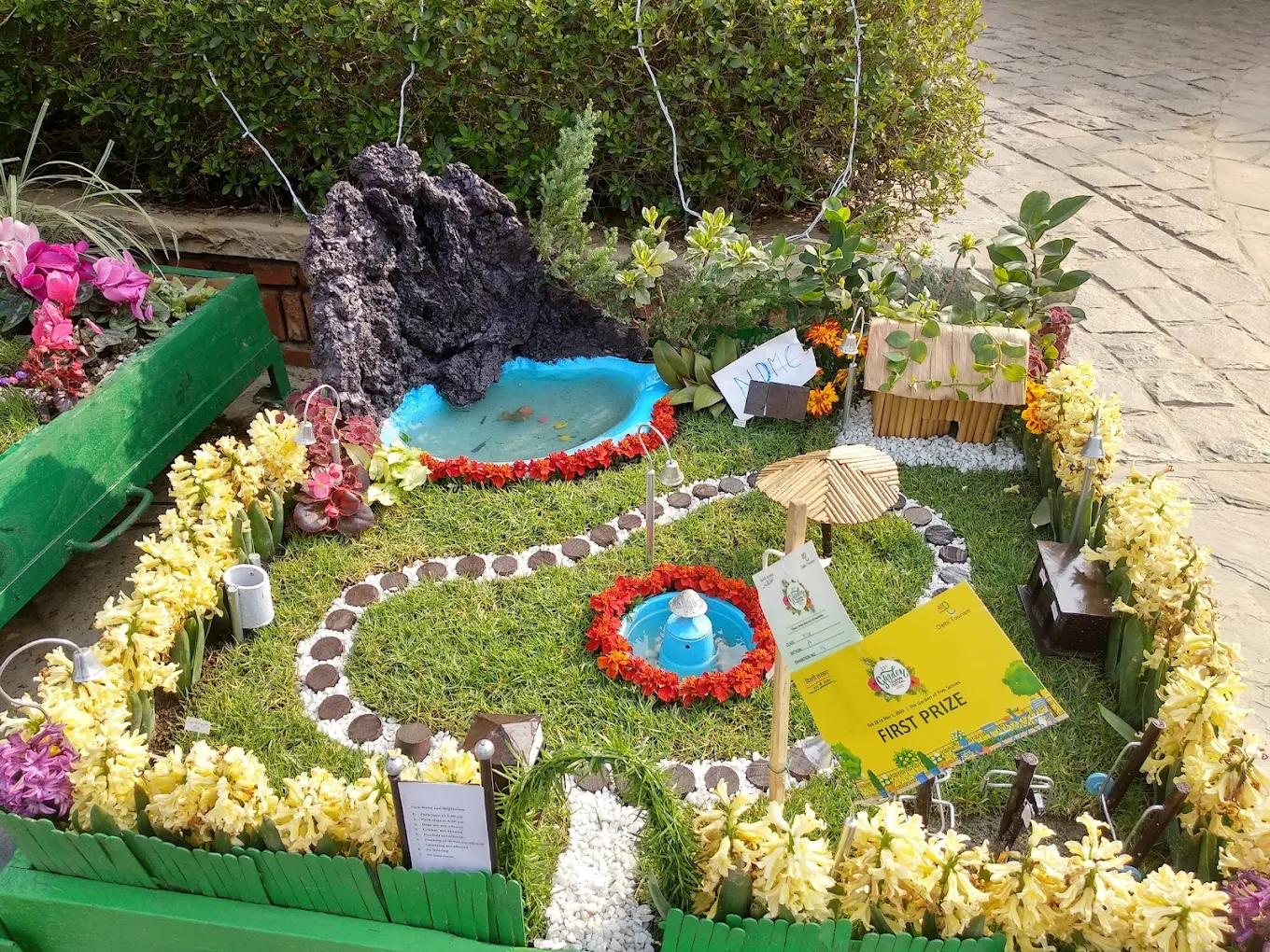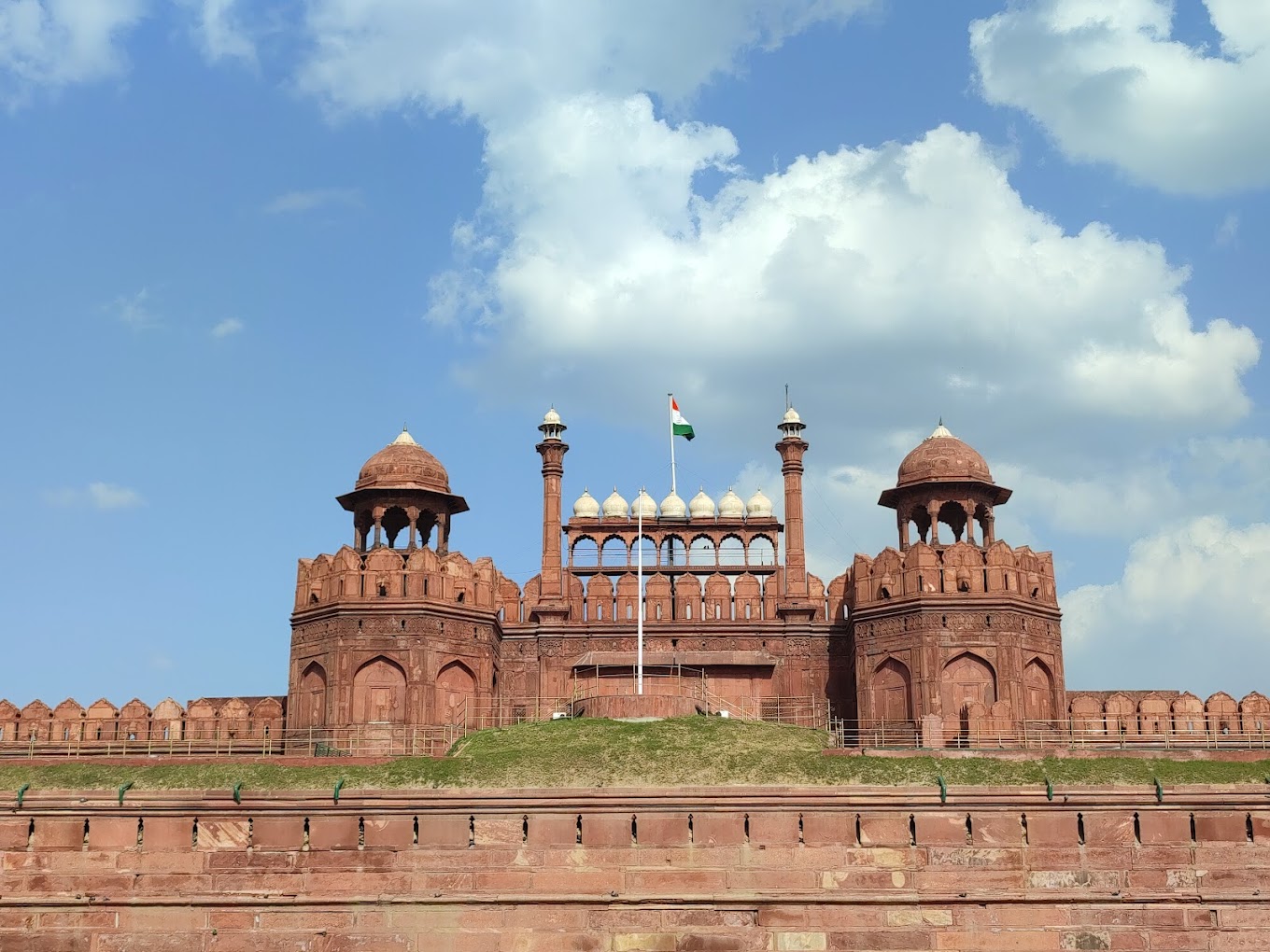
Located in the heart of Delhi, the Red Fort, also known as Lal Kila (लाल क़िला), stands as a magnificent testament to India’s rich history and architectural brilliance. Built during the Mughal era, this iconic monument has become an emblem of the country’s cultural heritage and a symbol of its grandeur. In this article, we will delve into the fascinating history, architectural splendor, and visitor information of the Red Fort.
Red Fort Delhi Timings
| Day | Timing |
| Monday | Closed / Holiday |
| Tuesday | 9:30 am – 4:30 pm |
| Wednesday | 9:30 am – 4:30 pm |
| Thursday | 9:30 am – 4:30 pm |
| Friday | 9:30 am – 4:30 pm |
| Saturday | 9:30 am – 4:30 pm |
| Sunday | 9:30 am – 4:30 pm |
Red Fort Light & Sound Show Timings are:
Hindi:
7.30 PM to 8.30 PM (May to Aug)
7 PM to 8 PM (Sep & Oct)
6 PM to 7 PM (Nov to Jan)
7 PM to 8 PM (Feb to Apr)
English:
9 PM to 10 PM (May to Aug)
8.30 PM to 9.30 PM (Sep & Oct)
7.30 PM to 8.30 PM (Nov to Jan)
8.30 PM to 9.30 PM (Feb to Apr)
History of Red Fort
The Red Fort was commissioned by Emperor Shah Jahan in 1638 and took nearly a decade to complete. It served as the main residence for the Mughal emperors until 1857 when the British took control of India. The fort witnessed many significant historical events, including the grand coronation ceremonies of Mughal emperors and the hoisting of the Indian national flag during the independence struggle.
Architecture and Design
The Red Fort showcases an exemplary fusion of Persian, Indian, and European architectural styles. Built using red sandstone, the fort spans over 250 acres and features intricate carvings, magnificent domes, delicate marble inlays, and sprawling gardens. The impressive Lahore Gate and Delhi Gate provide entry into the fort, leading to a vast complex of palaces, halls, and pavilions.
Significance of Red Fort
The Red Fort holds immense cultural and historical significance. It served as the center of political power during the Mughal era and witnessed the grandeur and opulence of the empire. The fort also played a pivotal role in the Indian independence movement, with Jawaharlal Nehru delivering his iconic speech on August 15, 1947, marking India’s independence from British rule.
Image Gallery Red Fort Delhi (Lal Kila) Delhi
Visiting Red Fort
Visiting the Red Fort offers a captivating experience for history enthusiasts, architecture lovers, and tourists from around the world. As you step into the fort, you will be transported back in time to the era of Mughal splendor. The complex houses several attractions, including palaces, museums, gardens, and a bustling market.
Red Fort Delhi Entry Fee
₹50 per person for Indians (In cash from the window)
₹35 per person for Indians (In Online)
₹550 per person for Foreign Tourists
₹25 for Video Camera
₹100 per person for adults (Light & Sound show)
No ticket for children below 15 years
Exploring the Red Fort Complex
The Red Fort complex offers a plethora of attractions to explore. Begin your journey at the Lahori Gate, where you will enter the Chhatta Chowk, a bustling market filled with traditional crafts, textiles, and souvenirs. As you proceed further, you will come across majestic structures like the Diwan-i-Aam (Hall of Public Audience), Diwan-i-Khas (Hall of Private Audience), Rang Mahal (Palace of Colors), and Mumtaz Mahal.
Light and Sound Show
A visit to the Red Fort is incomplete without experiencing the mesmerizing light and sound show held in the evenings. The show narrates the history of the fort, accompanied by stunning visuals and an enchanting musical backdrop. The combination of lights, sound, and the majestic backdrop of the fort creates a captivating ambiance, leaving visitors in awe of its grandeur.
Nearby Attractions
Apart from the Red Fort, there are several other attractions in the vicinity that are worth exploring. Some of the notable ones include Jama Masjid, Chandni Chowk, Raj Ghat, Shri Digambar Jain Lal Mandir, and Salimgarh Fort. These sites offer a glimpse into the rich cultural tapestry of Delhi and complement the visit to the Red Fort.
Best Places Inside the Red Fort
Diwan-i-Aam (Hall of Public Audience): The Diwan-i-Aam is a majestic hall where the Mughal emperors would address the general public. It is an impressive structure with intricately carved pillars and a grand throne for the emperor. The hall offers a glimpse into the grandeur and opulence of the Mughal court.
Diwan-i-Khas (Hall of Private Audience): The Diwan-i-Khas is a hall reserved for private meetings and discussions by the emperor. It is adorned with beautiful marble carvings and houses the famous Peacock Throne. The hall reflects the luxurious lifestyle and refined taste of the Mughal emperors.
Rang Mahal (Palace of Colors): The Rang Mahal is a stunning palace known for its vibrant color palette. It was the residence of the royal women, including the emperor’s wives and concubines. The palace features exquisite frescoes, delicate mirror work, and beautiful floral designs, creating a captivating ambiance.
Mumtaz Mahal: Mumtaz Mahal is a graceful pavilion named after Empress Mumtaz Mahal, the wife of Emperor Shah Jahan. It is a serene and beautiful structure with elegant arches and intricately designed walls. The pavilion offers panoramic views of the gardens and the Yamuna River.
Hammam (Royal Bath): The Hammam is the royal bath complex within the Red Fort. It consists of a series of rooms with intricately designed marble flooring, elegant fountains, and steam chambers. The Hammam provides insights into the bathing rituals and luxurious lifestyles of the Mughal emperors.
Naubat Khana (Drum House): The Naubat Khana is the entrance gate to the Red Fort and was used for announcing the arrival of the emperor. It features massive drums and musicians would play music to announce the emperor’s presence. The Naubat Khana offers a glimpse into the grand ceremonial practices of the Mughal era.
Hayat Bakhsh Bagh (Life-Bestowing Garden): The Hayat Bakhsh Bagh is a picturesque garden located within the Red Fort. It is adorned with beautiful fountains, lush greenery, and flowering plants. The serene atmosphere of the garden provides a tranquil escape from the bustling city outside.
Moti Masjid (Pearl Mosque): The Moti Masjid is a stunning mosque within the Red Fort complex. It is known for its white marble architecture and exquisite design. The mosque offers a peaceful space for prayer and reflection.
Visiting these remarkable places inside the Red Fort allows visitors to immerse themselves in the grandeur, architectural beauty, and historical significance of this iconic monument. Each location tells a story and offers a unique experience that showcases the rich cultural heritage of India.
Conclusion
The Red Fort, with its rich history, architectural marvels, and cultural significance, stands as a jewel in Delhi’s crown. It is a testament to the grandeur of the Mughal era and a symbol of India’s cultural heritage. A visit to the Red Fort is not only an opportunity to witness the splendid architecture but also a journey through time, immersing oneself in the rich tapestry of Indian history.
FAQs about Red Fort (Lal Kila) Delhi
What is the Red Fort Class 7?
"Red Fort Class 7" refers to a topic or chapter related to the Red Fort in the syllabus for Class 7 students. It is a part of the curriculum that educates students about the history, significance, and cultural heritage of the Red Fort.
What is Red Fort for kids?
Red Fort for kids refers to educational materials, interactive exhibits, or guided tours designed specifically for children to learn about the Red Fort in a fun and engaging way. It aims to introduce kids to the historical and cultural aspects of the fort in a child-friendly manner.
Which important event is held in Red Fort?
The most important event held in the Red Fort is the Prime Minister's address to the nation on India's Independence Day, which takes place annually on 15th August. It is a significant occasion that commemorates India's freedom and is celebrated with great enthusiasm.
What is famous about Red Fort?
The Red Fort is famous for its splendid architecture, historical importance, and cultural significance. It served as the main residence of the Mughal emperors, witnessed significant events during India's history, and stands as a symbol of the country's rich heritage and struggle for independence.
Is Red Fort in Delhi or Agra?
The Red Fort is located in Delhi, the capital city of India. It is situated in the Old Delhi area, near the banks of the Yamuna River. The Red Fort in Agra is known as the Agra Fort, which is a separate historical monument.
What is the ticket price of Red Fort?
The ticket price for visiting the Red Fort may vary. For Indian citizens, the entry fee is generally around ₹35 per person, while for foreign tourists, it is approximately ₹500 per person. However, please note that these prices are subject to change, so it is advisable to check the official website or inquire locally for the current ticket prices.
Which is the best day to visit Red Fort?
The Red Fort can be visited throughout the year, but the best day to visit depends on personal preference and convenience. However, if you wish to witness the grandeur of the Independence Day celebrations, visiting on 15th August would be a memorable experience as it includes the Prime Minister's address and a vibrant atmosphere.
What are 2 special features of Red Fort?
Two special features of the Red Fort are its impressive Lahori Gate and the stunning Sound and Light Show. The Lahori Gate is the main entrance to the fort and exhibits intricate carvings and architectural beauty. The Sound and Light Show is a captivating evening spectacle that narrates the history of the fort through lights, sound effects, and a captivating storytelling experience.
What are 5 facts about Red Fort?
Here are five interesting facts about the Red Fort:
1. The Red Fort was built by the Mughal Emperor Shah Jahan in the 17th century.
2. The fort is made of red sandstone, giving it its distinctive appearance.
3. The complex of the Red Fort includes various structures like Diwan-i-Aam, Diwan-i-Khas, and Mumtaz Mahal.
4. The fort served as the residence of Mughal emperors and witnessed important historical events.
5. The Red Fort is a UNESCO World Heritage Site and attracts millions of visitors every year.
Further Reading:
India Gate Delhi Entry Fee, Timings, History, Images & Location
Kalka Ji Mandir Delhi कालकाजी मंदिर,दिल्ली Timings, History, Entry Fee, Images, Aarti, Location
Akshardham Temple Delhi, History, Timings, Entry Fee, Architecture, Images & Location
Chhatarpur Temple Delhi, Pooja, Entry Fee, Aarti Timings
Best Places to Visit in New Delhi
Top 13 Places worth visiting in Delhi!!
Delhi – The National Capital City with Historical Importance


